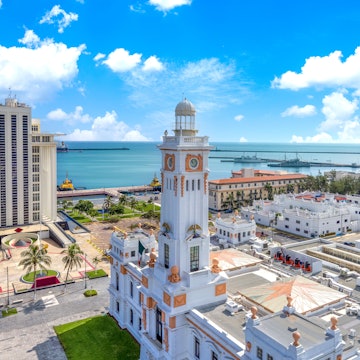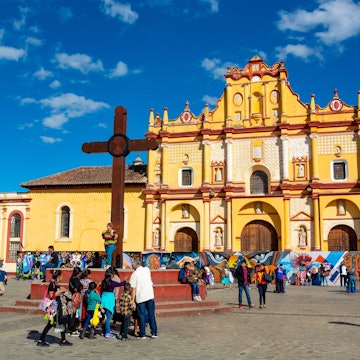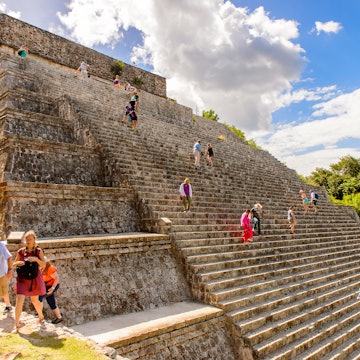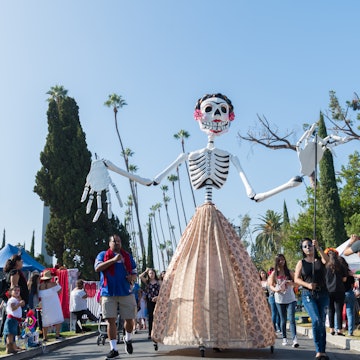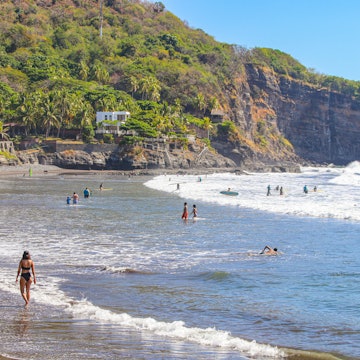
6 places to find Aztec history in and around Mexico City


At sites and museums in Mexico City like Templo Mayor, you can feel the presence of the Aztec culture. Shee Heng Chong / Shutterstock
One of the most cosmopolitan cities you’ll find on Earth, Mexico City brims with exciting restaurants, world-class museums and ultra-modern architecture. It’s become a must-visit destination for savvy travelers for good reason.
So it’s not surprise that this amazing city has been a world capital for centuries – long before the arrival of the Spaniards. And though you’ll have to use a bit of imagination to conjure its prior incarnation in your mind, you won’t have to look too hard to find traces of its stint as the capital of the Aztec civilization.
Scratch the surface of the skyscrapers and sprawling neighborhoods, and you’ll discover the seams of a rich and vibrant history. Here’s where to seek out Mexico City’s Aztec past.
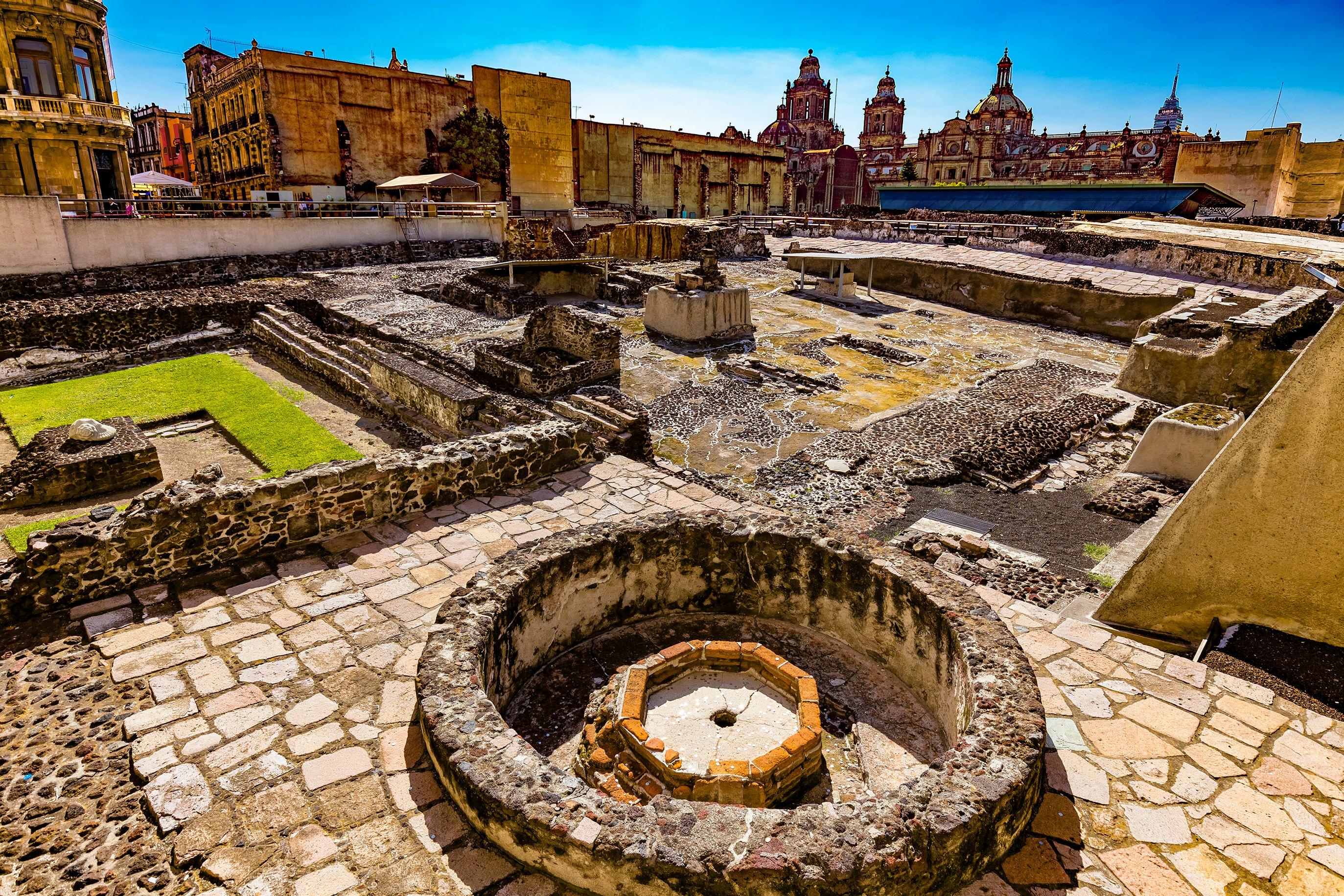
1. Discover traces of “la gran Tenochtitlan” at Templo Mayor
With an estimated population of 140,000, Tenochtitlan, which occupied an island in Lake Texcoco, served as the the capital of the Aztec empire. After conquistador Hernán Cortés and his Spanish forces laid siege to the city in 1519 – leaving a trail of destruction in their wake – they erected colonial monuments where Aztec edifices once stood. As the city grew, the elaborate, extraordinary system of manmade waterways that had defined Tenochtitlan were drained, and the modern metropolis of Mexico City took shape.
In 1978, archaeologists working just off the Zócalo in the historic heart of the city discovered a large pyramid, now known as Templo Mayor. In the literal shadow of Mexico City’s magnificent cathedral, these ruins, along with the excellent, extremely thorough museum that showcases even more objects, bring to life better than any other site Mexico City’s Aztec heritage.

2. Consider the scope of Mexican history at Plaza de las Tres Culturas
The main square in the neighborhood of Tlatelolco, the Plaza de las Tres Culturas illustrates the three broad divisions that define the history of Mexico: the Aztec period, the Spanish colonial era and the (current) post-independence moment. In the center of the square are the ruins of the temple of Tlatelolco as well what was once the largest market in the entire region. Beside it sits a Spanish-built church, Templo de Santiago, constructed using stones from the Aztec temple.
The square has a tumultuous past: in 1968, students demonstrated agains the government here, and security forces opened fire on the protestors, killing hundreds.

3. Climb the pyramids of Teotihuacán
Teotihuacán is the most famous Mesoamerican attraction in greater Mexico City. The origins of the astonishing site, constructed between the 1st and 7th centuries CE, are shrouded in mystery, and scholars continue to debate the culture that raised its giant pyramids. Yet archaeologists are certain that the Aztecs were inhabiting the city by the 13th century.
As you arrive at the UNESCO-listed site, you’ll spot the enormous Pyramid of the Sun – at 210ft, the third-largest in the world. You can climb the steps to take in the same views that the Aztecs had over 700 years ago, including of the nearby Pyramid of the Moon and Quetzalcóatl Temple. As a testament to the engineering feats of ancient cultures – and of human achievement – a visit here is a must.

4. See where old meets new at the ancient city of Cuicuilco
South of Mexico City’s center in a borough called Tlalpan is a little-visited archaeological site called Cuicuilco, which means “place of songs” in the Nahuatl language. As at Teotihuacán, the original inhabitants of this city were not Aztecs. While the buildings date back to as early as 1400 BCE, it is likely that the Aztecs began living in this city around the 14th century. The museum within the park is a fascinating place where you can learn more about Aztec culture as well as the many Mesoamerican peoples that preceded them in the region.
5. Head to one of the best-preserved Aztec monuments at Santa Cecilia Acatitlán
A 45-minute drive north of the city, the small town of Santa Cecilia contains one of the best remaining examples of Aztec architecture in all of Mexico. While most of the site’s stones were removed to build churches when the Spanish arrived, what’s left is well worth a journey for any Aztec-history buff. Archaeologists have discovered that this location was a political and religious hub during the height of the empire.

6. Get the full context at the Museum of Anthropology
The Museum of Anthropology is the largest and most visited museum in Mexico – with very good reason. A survey of the country’s extraordinary range of cultures and artworks, this world-class collection will open both your eyes and your mind. It’s also the perfect place to end your tour of Mexico City Aztec history, and will add context to the physical sites that lie around town.








